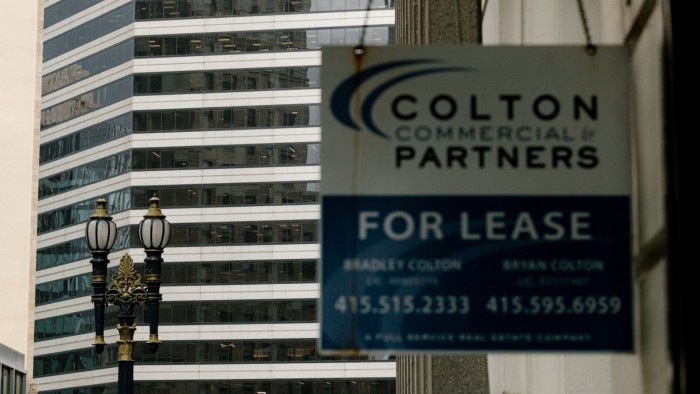US lenders warned that commercial property is ‘next shoe to drop’

Roula Khalaf, Editor of the FT, selects her favourite stories in this weekly newsletter.
Fund managers are warning of growing problems in the $5.6tn US commercial real estate industry that could prove painful for lenders already shaken by turmoil in the banking sector.
Rising interest rates, falling prices and waning demand for office space following the pandemic had strained the commercial property market. But these troubles intensified after this year’s failures of Silicon Valley Bank, Signature Bank and First Republic raised worries about other regional banks that account for the bulk of commercial real estate loans.
“The private market hasn’t started to heavily mark down real estate,” Apollo Global Management co-president Scott Kleinman told the Financial Times.
“The equity will be first. That’s the next shoe to drop in the US. Like everything else, it has been priced so tightly and there hasn’t been a commercial real estate crisis in the US since the ‘90s.”
Guggenheim Partners chief investment officer Anne Walsh said the pain would be concentrated in certain regions of the US, including large urban centres such as San Francisco and New York, as well as in second-class office buildings that are in need of repair.
“We’re likely going into a real estate recession, but not across the entire real estate market,” Walsh said. “Lenders will be very choosy about what loans they are willing to make.”
She noted some lenders were requiring personal guarantees from property owners — in which borrowers pledge their own assets to secure a mortgage — a signal of the tightening lending standards and the fact that banks were pulling back. In a Federal Reserve survey released on Monday, a majority of US banks said they tightened credit standards for loans secured by non-residential properties in the first quarter, while none eased standards.
A wall of debt is also scheduled for repayment in the coming years. “There’s a maturity cliff for a lot of this real estate in the next few years, a significant portion of which is funded by regional banks,” said the chief executive of a large US bank.
“Commercial real estate is leverage on leverage on leverage . . . if people are forced to quickly unwind that leverage it can pop up in other places.”
For many years, real estate developers have relied on borrowing cheaply and investing the money into a market of rising asset prices.
Now, said, Mathieu Chabran, co-founder of $43bn alternative asset manager Tikehau Capital, “We see a perfect storm of rising interest rates forcing assets to reprice down, combined with a structural decline in occupation rates and ageing assets.”
Last month, Berkshire Hathaway vice-chair Charlie Munger warned of a brewing storm in the US commercial property market, saying banks were “full” of “bad loans”.
“A lot of real estate isn’t so good any more,” Munger said. “We have a lot of troubled office buildings, a lot of troubled shopping centres, a lot of troubled other properties. There’s a lot of agony out there.”
Munger added the problems were not on the scale of the 2008 financial crisis.
At Berkshire’s annual general meeting in Omaha on Saturday, Munger’s partner Warren Buffett noted it was the lenders who often ended up with unwanted property.
“The banks tend to extend and pretend,” he said. “There’s all kinds of activities that arise out of commercial real estate development that occur on a big scale, but it all has consequences and we are starting to see the consequences of people who could borrow at 2.5 per cent and find out it doesn’t work at current rates.”
Additional reporting by George Hammond
Comments